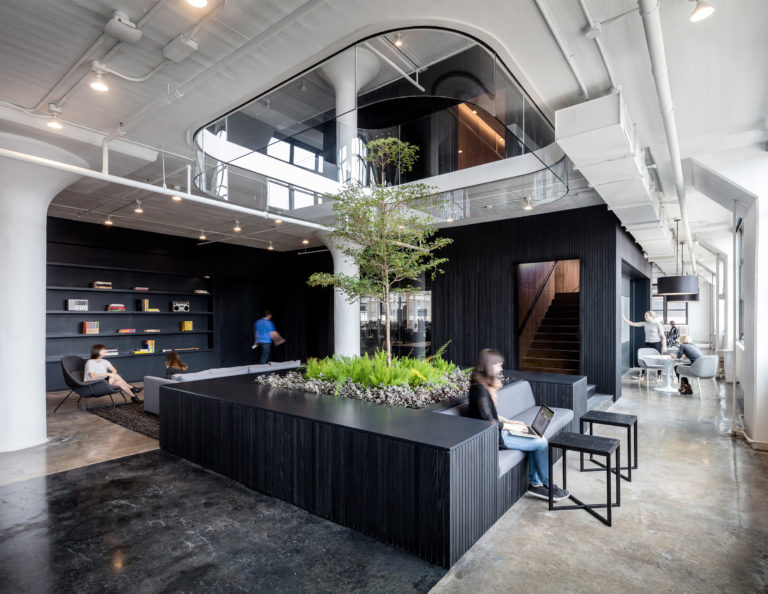Jury
Barbara Bestor, FAIA
Principal, Bestor Architecture
Hagy Belzberg, FAIA, OAA
Principal, Belzberg Architects
Tatiana Bilbao
Tatiana Bilbao ESTUDIO
Elizabeth P. Gray, FAIA
Principal and Partner, Gray Organschi Architecture
Anne Fougeron, FAIA
Principal, Fougeron Architecture
V. Mitch McEwen
Partner, A(n) Office; Principal, McEwen Studio
Peter Waldman
Architect and Educator, School of Architecture, University of Virginia
Hagy received his Masters of Architecture with Distinction from Harvard University Graduate School of Design. He has been awarded the American Institute of Architects California Council “Emerging Talent Award”, and received the prestigious “Emerging Voice” Award from the Architectural League of New York in 2008. In 2010 Hagy Belzberg was elected to The College of Fellows of the American Institute of Architects. In 2014, Hagy Belzberg was invited to exhibit his work at MOCA’s “A New Sculpturalism, Contemporary Architecture from Southern California.”
His firm, Belzberg Architects, has earned over 70 international, national and local design awards including over 20 from the American Institute of Architects. His work has been featured in over 200 publications throughout more than 25 countries and has been honored with the A.I.A. Los Angeles Cultural Affairs Committee Design Honor Award and the Green Building Award from the Mayor of Los Angeles. The Urban Land Institute recognized his design work and contribution to excellence in urban planning. In 2007, the Association for Computer-Aided Design in Architecture, Canada featured his work at the Expanding Bodies Conference which focused on “digital sensing and interactive and responsive systems.”
Hagy Belzberg‘s approach to design is driven by investigation, particularly of non-traditional construction methods, and often through the use of digital fabrication. His projects continually question material conventions while applying innovative solutions to each design challenge. Since 1994, Hagy has held Graduate and Undergraduate level instructorship and lecture positions at UCLA, USC and The Southern California Institute of Architecture.
Through a multicultural and multidisciplinary office, the work of Tatiana Bilbao tries to understand the place that surrounds us in order to translate its rigid codes into architecture. It tries to regenerate spaces in order to humanize them as a reaction to global capitalism, opening up niches for cultural and economic development.
Her work includes a botanical garden, a master plan and open chapel for a Pilgrimage Route, a Biotechnological Center for a Tech Institution, a house that is built with 8,000 USD, and a Funeral Home.
Bilbao was the recipient of the Kunstpries Berlin in 2012, the Global Award for Sustainable Architecture Prize in 2014 and named as Emerging Voice by the Architecture League of NY in 2010. Her work is part of the collection of the Centre George Pompidou in Paris, France, and the Carnegie Museum of Art and the Art Institute of Chicago. Bilbao has been visiting professor at Yale School of Architecture, Rice School of Architecture and Columbia GSAPP. Her work has been published in A+U, Domus and The New York Times, among others.
Elizabeth Gray is a principal and partner at Gray Organschi Architecture (www.grayorganschi.com) and a member of the fabrication construction firm JIG Design Build in New Haven, Connecticut.
Gray Organschi Architecture is recognized internationally for its innovative conception and careful crafting of architectural projects ranging from the adaptive re-use of damaged buildings and neighborhoods to the development and implementation of low-impact component assembly systems for ecologically delicate sites. In buildings for both private clients and community institutions, Gray Organschi Architecture has explored the intersection of environmental constraint, social need and available resources to produce architecture that is environmentally sensitive as well as culturally and physically durable.
Gray Organschi’s current research project, the Timber City Initiative (www.timbercity.org), explores the application of emerging structural wood technologies to the construction of global cities.
Anne Fougeron, FAIA, is the principal of Fougeron Architecture in San Francisco, California. Born of French parents and raised in Paris and New York, she credits her bicultural upbringing as the source of her aesthetic values, which combine a respect for historic precedent with an interest in the intersection of old and new.
In 1986, she founded Fougeron Architecture and has gone on to design award-winning private—and public—sector projects in a decidedly modernist vocabulary. Known for her diverse portfolio, featuring projects of institutional, commercial, health-care and residential clients, each project by Fougeron Architecture is subtly provocative. A primary concern is how the inhabitants of a building will interact with each other and with the building itself for years to come. This is architecture that enriches lives and communities, energizes our cities, and architecture that advances social equality.
Fougeron has taught architectural design to undergraduate and graduate students at the California College of the Arts in San Francisco and the University of California, Berkeley, where she served as the Howard Friedman Visiting Professor of Professional Practice in the Department of Architecture from 2003 to 2004. She continues to be involved in the design community as visiting critic for schools, lecturing on design topics, and serving on award juries.
As Partner at A(n) Office and Principal of McEwen Studio, V. Mitch McEwen works in architectural and urban design, focused particularly on the intersection of urban culture and global forces. A(n) Office was one of 12 U.S. firms exhibited at the U.S. pavilion for the 2016 Venice Architecture Biennale. Before founding McEwen Studio, McEwen worked as an urban designer in the office of Bernard Tschumi Architects and New York City’s Department of City Planning. Her work has been exhibited at the 2016 Istanbul Design Biennial, the Museum of Contemporary Art Detroit, and the Storefront for Art & Architecture. Since 2014 she has been Assistant Professor of Architecture at Taubman College of Architecture & Urban Planning at University of Michigan, after teaching previously as Adjunct Assistant Professor at Columbia GSAPP. McEwen holds an MArch from Columbia GSAPP and BA from Harvard.
Peter Waldman is an architect and educator. He believes architecture frames, with the help of celestial sources and essential gravity, the flows of this changing world. Waldman studied architecture from 1961-69, first at Princeton University, and later as a Peace Corps volunteer architect in Arequipa, Peru. He served his apprenticeship in the studios of Richard Meier briefly and more substantially with Michael Graves. Since the 1970s, he has been an architect and educator teaching first at Princeton, briefly at the University of Cincinnati, then at Rice University, and currently at the University of Virginia. The climatic condition has been the subject of built projects including the Parasol and Hurricane Houses in Houston; an Oasis for the Stegosaurus and the Trojan Horse in Galveston; and Parcel X, a Satyric campsite in North Garden, Virginia.
Published internationally in Global Architecture, Area, Architecture and, recently, the Yale Perspecta, Waldman was recognized by the Architectural League of New York as an Emerging Voice in 1983 and as a Fellow of the American Academy in Rome in 2000. His teaching has always benchmarked the beginning and the end and views architecture as a covenant with the world, again collaged in his forthcoming seminal folio, The Word Made Flesh.
Call for Submissions
Awards Archives
Best in Competition
Winners
Jury
Barbara Bestor, FAIA
Principal, Bestor Architecture
Hagy Belzberg, FAIA, OAA
Principal, Belzberg Architects
Tatiana Bilbao
Tatiana Bilbao ESTUDIO
Elizabeth P. Gray, FAIA
Principal and Partner, Gray Organschi Architecture
Anne Fougeron, FAIA
Principal, Fougeron Architecture
V. Mitch McEwen
Partner, A(n) Office; Principal, McEwen Studio
Peter Waldman
Architect and Educator, School of Architecture, University of Virginia
Hagy received his Masters of Architecture with Distinction from Harvard University Graduate School of Design. He has been awarded the American Institute of Architects California Council “Emerging Talent Award”, and received the prestigious “Emerging Voice” Award from the Architectural League of New York in 2008. In 2010 Hagy Belzberg was elected to The College of Fellows of the American Institute of Architects. In 2014, Hagy Belzberg was invited to exhibit his work at MOCA’s “A New Sculpturalism, Contemporary Architecture from Southern California.”
His firm, Belzberg Architects, has earned over 70 international, national and local design awards including over 20 from the American Institute of Architects. His work has been featured in over 200 publications throughout more than 25 countries and has been honored with the A.I.A. Los Angeles Cultural Affairs Committee Design Honor Award and the Green Building Award from the Mayor of Los Angeles. The Urban Land Institute recognized his design work and contribution to excellence in urban planning. In 2007, the Association for Computer-Aided Design in Architecture, Canada featured his work at the Expanding Bodies Conference which focused on “digital sensing and interactive and responsive systems.”
Hagy Belzberg‘s approach to design is driven by investigation, particularly of non-traditional construction methods, and often through the use of digital fabrication. His projects continually question material conventions while applying innovative solutions to each design challenge. Since 1994, Hagy has held Graduate and Undergraduate level instructorship and lecture positions at UCLA, USC and The Southern California Institute of Architecture.
Through a multicultural and multidisciplinary office, the work of Tatiana Bilbao tries to understand the place that surrounds us in order to translate its rigid codes into architecture. It tries to regenerate spaces in order to humanize them as a reaction to global capitalism, opening up niches for cultural and economic development.
Her work includes a botanical garden, a master plan and open chapel for a Pilgrimage Route, a Biotechnological Center for a Tech Institution, a house that is built with 8,000 USD, and a Funeral Home.
Bilbao was the recipient of the Kunstpries Berlin in 2012, the Global Award for Sustainable Architecture Prize in 2014 and named as Emerging Voice by the Architecture League of NY in 2010. Her work is part of the collection of the Centre George Pompidou in Paris, France, and the Carnegie Museum of Art and the Art Institute of Chicago. Bilbao has been visiting professor at Yale School of Architecture, Rice School of Architecture and Columbia GSAPP. Her work has been published in A+U, Domus and The New York Times, among others.
Elizabeth Gray is a principal and partner at Gray Organschi Architecture (www.grayorganschi.com) and a member of the fabrication construction firm JIG Design Build in New Haven, Connecticut.
Gray Organschi Architecture is recognized internationally for its innovative conception and careful crafting of architectural projects ranging from the adaptive re-use of damaged buildings and neighborhoods to the development and implementation of low-impact component assembly systems for ecologically delicate sites. In buildings for both private clients and community institutions, Gray Organschi Architecture has explored the intersection of environmental constraint, social need and available resources to produce architecture that is environmentally sensitive as well as culturally and physically durable.
Gray Organschi’s current research project, the Timber City Initiative (www.timbercity.org), explores the application of emerging structural wood technologies to the construction of global cities.
Anne Fougeron, FAIA, is the principal of Fougeron Architecture in San Francisco, California. Born of French parents and raised in Paris and New York, she credits her bicultural upbringing as the source of her aesthetic values, which combine a respect for historic precedent with an interest in the intersection of old and new.
In 1986, she founded Fougeron Architecture and has gone on to design award-winning private—and public—sector projects in a decidedly modernist vocabulary. Known for her diverse portfolio, featuring projects of institutional, commercial, health-care and residential clients, each project by Fougeron Architecture is subtly provocative. A primary concern is how the inhabitants of a building will interact with each other and with the building itself for years to come. This is architecture that enriches lives and communities, energizes our cities, and architecture that advances social equality.
Fougeron has taught architectural design to undergraduate and graduate students at the California College of the Arts in San Francisco and the University of California, Berkeley, where she served as the Howard Friedman Visiting Professor of Professional Practice in the Department of Architecture from 2003 to 2004. She continues to be involved in the design community as visiting critic for schools, lecturing on design topics, and serving on award juries.
As Partner at A(n) Office and Principal of McEwen Studio, V. Mitch McEwen works in architectural and urban design, focused particularly on the intersection of urban culture and global forces. A(n) Office was one of 12 U.S. firms exhibited at the U.S. pavilion for the 2016 Venice Architecture Biennale. Before founding McEwen Studio, McEwen worked as an urban designer in the office of Bernard Tschumi Architects and New York City’s Department of City Planning. Her work has been exhibited at the 2016 Istanbul Design Biennial, the Museum of Contemporary Art Detroit, and the Storefront for Art & Architecture. Since 2014 she has been Assistant Professor of Architecture at Taubman College of Architecture & Urban Planning at University of Michigan, after teaching previously as Adjunct Assistant Professor at Columbia GSAPP. McEwen holds an MArch from Columbia GSAPP and BA from Harvard.
Peter Waldman is an architect and educator. He believes architecture frames, with the help of celestial sources and essential gravity, the flows of this changing world. Waldman studied architecture from 1961-69, first at Princeton University, and later as a Peace Corps volunteer architect in Arequipa, Peru. He served his apprenticeship in the studios of Richard Meier briefly and more substantially with Michael Graves. Since the 1970s, he has been an architect and educator teaching first at Princeton, briefly at the University of Cincinnati, then at Rice University, and currently at the University of Virginia. The climatic condition has been the subject of built projects including the Parasol and Hurricane Houses in Houston; an Oasis for the Stegosaurus and the Trojan Horse in Galveston; and Parcel X, a Satyric campsite in North Garden, Virginia.
Published internationally in Global Architecture, Area, Architecture and, recently, the Yale Perspecta, Waldman was recognized by the Architectural League of New York as an Emerging Voice in 1983 and as a Fellow of the American Academy in Rome in 2000. His teaching has always benchmarked the beginning and the end and views architecture as a covenant with the world, again collaged in his forthcoming seminal folio, The Word Made Flesh.










































